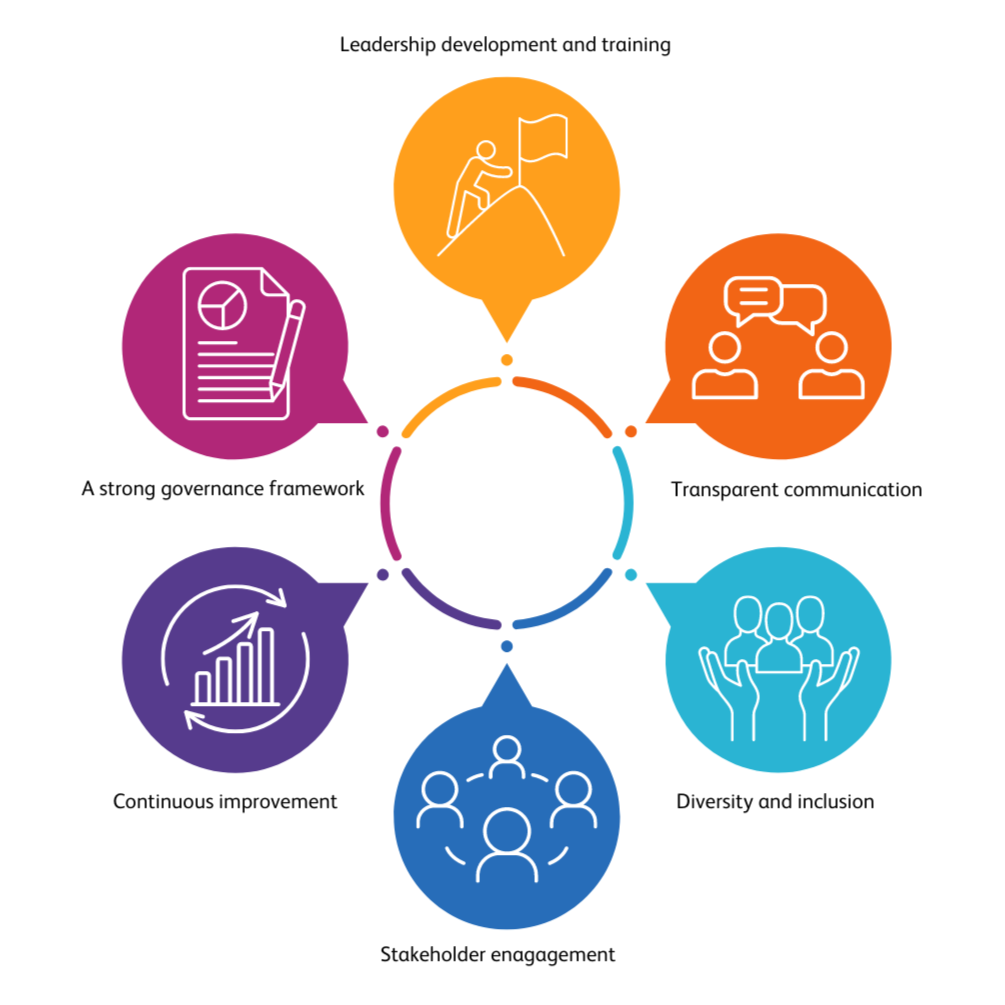
The Impact of Low Governance on Modern Leadership
Today, many organisations and leaders aspire to great leadership. But is it only skills that contribute to great leadership? Data science without substantive governance can be a fatal tool in today's organisational landscape, taking leadership and decision-making to a different level. Our HSLU lecturer, Dr Dimitrios Marinos, provides helpful insights into how a strong governance framework could help solve leadership mishaps now and in the future.
Shortcuts:
Intro | How not to lead | Ovecoming the crisis | The six pillars of governance
Info-Events | Programme Information | Contact

Dr Dimitrios Marinos, our lecturer at HSLU with expertise in artificial intelligence, big data analytics, digital transformation, AI ethics, data governance and more.
Why successful organisations need a strong governance framework
Given the current market and societal needs in today’s labour market, leadership is central to retaining talented employees, generating healthy growth and ultimately creating (shareholder) value. Universities and institutes around the world are now offering masters degrees and various types of studies to enhance the leadership skills of employees and senior managers. But is it only about leadership skills? What if the organisation does not provide the right environment, based on a strong governance framework, to be an empathic leader?
Leadership is profoundly influenced by governance, creating a symbiotic relationship that shapes organisational culture, decision-making processes and overall effectiveness. Governance provides the framework within which leaders operate, offering policies, structures and principles that guide their actions and decisions.
The influence of governance on leadership is multi-faceted. First and foremost, governance sets the parameters for ethical behaviour and responsible leadership. It sets expectations for transparency, accountability and compliance with legal and regulatory standards. Leaders, in turn, are charged with upholding and embodying these principles and serving as role models for the entire organisation.
The Enron and Tyco International scandals – how not to lead
In examining real-world cases, the Enron scandal serves as a stark illustration of how governance failures can facilitate unethical leadership behaviour. What happened? Enron’s leadership took advantage of weak oversight and inadequate checks and balances to engage in fraudulent financial practices that ultimately led to the company’s collapse. This governance vacuum allowed executives to prioritise short-term gains over ethical considerations, with serious consequences for employees and investors.
Similarly, the Tyco International scandal involving executives Dennis Kozlowski and Mark Swartz highlights the impact of poor governance on leadership behaviour. The lack of proper controls enabled the executives to commit corporate fraud and embezzlement, demonstrating how governance failures can embolden executives to act against the best interests of the organisation and its stakeholders.
How Johnson & Johnson overcame a crisis
In contrast, the Johnson & Johnson Tylenol crisis demonstrates the positive synergy between effective governance and responsible leadership. Faced with a product tampering crisis, Johnson & Johnson’s leadership responded quickly and decisively by recalling the product and implementing safety measures. This incident highlights how robust governance structures, including crisis management frameworks, empower leadership to make ethical decisions and prioritise consumer safety. In essence, these real-life scenarios highlight the central role of governance in shaping leadership behaviour and organisational outcomes.
Why a governance framework is a win-win for modern organisations
In addition, governance structures define the distribution of power and decision-making authority within an organisation. Leaders operate within these structures, whether hierarchical or decentralised, which significantly affects their ability to implement change, make strategic decisions and foster innovation. Effective governance aligns leadership actions with organisational goals, ensuring a coherent and focused approach to achieving objectives.
Moreover, governance mechanisms often include checks and balances to mitigate risk and prevent abuse of power. These safeguards provide assurance to stakeholders, including employees, customers and investors, and foster trust in leadership. Conversely, poor governance can lead to leadership failures, ethical lapses and a breakdown in stakeholder trust.
Below we have outlined six pillars that would actually improve leadership through governance. These six principles range from communication to shareholder engagement, increased transparency and a more inclusive approach to operations. Major US companies have already recognised the benefits of these pillars, as they have seen improvements in employee satisfaction and a more thriving working environment.

1. A strong governance framework
Establish a robust governance framework that is aligned with the organisation’s mission, values and long-term goals. Ensure that governance structures are well defined, adaptable and reflect best practice.
2. Leadership development and training
Invest in leadership development programmes that emphasise ethical decision-making, effective communication and strategic thinking. Provide ongoing training for leaders to enhance their governance awareness and skills.
3. Transparent communication
Promote transparent communication between management and stakeholders. Clear, open and honest communication builds trust and ensures that stakeholders are well informed about the organisation’s decisions and actions.
4. Diversity and inclusion
Integrate diversity and inclusion principles into governance structures. Diverse perspectives at the leadership level contribute to more inclusive decision-making and reduce the risk of bias.
5. Stakeholder engagement
Actively engage with stakeholders to understand their expectations and concerns. A governance approach that incorporates stakeholder input ensures that management decisions take into account the wider impact on the organisation.
6. Continuous improvement
Embrace a culture of continuous improvement in both governance and leadership. Regularly reassess governance practices and leadership effectiveness, adapting to changing circumstances and organisational needs.
By proactively addressing these considerations, organisations can create a positive synergy between governance and leadership, ensuring that governance structures support rather than hinder effective and ethical leadership practices.
So how does your organisation improve leadership through governance?
We would like to thank Dr Dimitrios Marinos for his dedication in sharing these wonderful insights with us.
Data is the resource of the 21st century!
Register and join us for a free online Information-Event:
Monday, 11 August 2025 (Online, English)
Monday, 8 September 2025 (Online, German)
Monday, 6 October 2025 (Online, English)
Monday, 3 November 2025 (Online, German)
Programme Info: MSc in Applied Information and Data Science
More Field Reports & Experiences: Professional portraits & study insights
Frequently Asked Questions: FAQ


